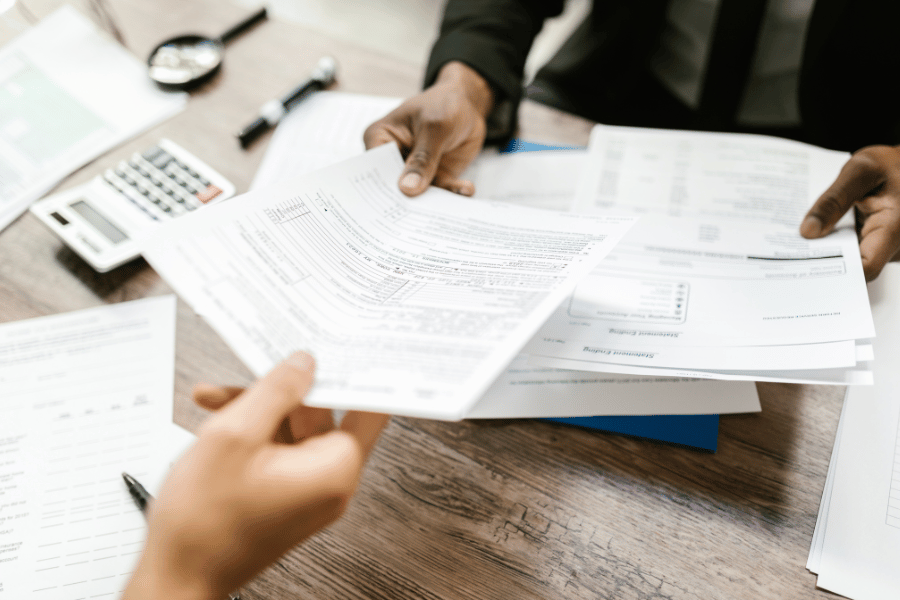What Does "Clear to Close" Mean in Real Estate?
Did you get the news from your lender that you are clear to close? Follow along as we discuss what clear to close means, what to expect, and what happens after.
If you're in the process of buying a home in Raleigh or the surrounding Triangle area, you've likely heard the term "clear to close" from your lender or real estate agent. This phrase represents one of the most exciting milestones in your home-buying journey, but what exactly does it mean, and how do you get there?
Buying a home is a lengthy process with many steps and processes that most new home buyers don't know. In this guide, we'll discuss what clear to close means, how to get your loan cleared to close, and what to expect after you are cleared to close.
Here is what you need to know about understanding clear to close
1. Understanding Clear to Close: The Basics
"Clear to close" is your lender's official green light that your mortgage loan has been fully approved and that you're ready to proceed to the closing table. It means your lender has reviewed all your documentation, verified your financial information, and confirmed that you meet all the loan requirements.
Essentially, it's the final thumbs-up before you receive the keys to your new home. Think of it as the difference between a conditional approval (where you still have hoops to jump through) and final approval (where everything is locked and loaded for closing).
.png)
2. What Happens Before Clear to Close?
The journey to clear to close involves several critical steps that occur after your initial loan application:
Initial Application and Pre-Approval Your mortgage process begins with pre-approval, where your lender reviews your basic financial information to determine how much you can borrow. This gives you confidence when house hunting in Raleigh's competitive market.
Underwriting Process Once you have a property under contract, your file goes to underwriting. This is where a mortgage underwriter carefully examines your financial documents, employment history, credit report, and the property details. They're essentially determining the risk of lending to you.
Conditional Approval Most borrowers receive conditional approval first, which means you're approved pending certain conditions. These might include providing additional documentation, paying debt, or resolving credit issues.
Final Review Before issuing a clear to close, your lender reviews your file, including a last-minute credit check and employment verification. They want to ensure nothing has changed since your initial approval.
3. How to Get Your Loan Cleared to Close
Getting your loan cleared to close is a sign of relief, but there are many steps involved. Missing even one step could be detrimental to the process and cause your loan application to be denied.
Clear to close means that the underwriter has approved all of your documents, and you can move forward with the documents to close on the loan. Getting to clear to close requires proactive effort on your part. Here's how to position yourself for success:
Maintain Financial Stability: Avoid making major financial changes from the moment you apply for your mortgage until closing day. Don't switch jobs, take on new debt, or make large purchases. Your lender will verify your employment and pull your credit again before closing.
Respond Quickly to Lender Requests: When your lender or loan officer asks for additional documentation, provide it promptly. Common requests include recent pay stubs, bank statements, or explanations for unusual deposits. Quick responses keep your timeline on track.
Complete Required Tasks: This might include getting a home inspection, securing homeowner's insurance, or providing gift letter documentation if you receive down payment assistance from family.
Stay in Close Communication: Regularly contact your loan officer and real estate agent. In Raleigh's fast-moving market, timing is everything, and good communication prevents delays.

4. What to Expect After Clear to Close
After you are cleared to close, your lender will take the following steps to prepare for closing. This can include scheduling a date and time for your closing and contacting your title company, real estate attorney, and anyone else who plans on attending the closing.
The lender is also responsible for preparing the final documents you must sign on your closing day. Here are a few things you will be expected to do before closing:
Closing Disclosure Review
A closing disclosure is a five-page form that provides final details about your selected mortgage loan. You'll receive your closing disclosure at least three business days before closing.
This document outlines your final loan terms, closing costs, and monthly payment. Please review it carefully and ask questions about anything unclear.
Final Walk-Through
A final walk-through is the buyer's opportunity to inspect the house before the official closing. Real estate agents highly recommend this to ensure the property is in the same condition you and the seller have agreed upon.
The final walk-through is typically scheduled 24-48 hours before closing. This is your time to catch any mistakes or problems that might have occurred after submitting and accepting an offer.
While final walkthroughs are not required, they are a crucial step. After closing, any issues that weren't caught due to skipping a final walkthrough become your responsibility.
Closing Preparation
During your closing, you will sign many documents, including your closing disclosure, the home title officially transfers to you, and you become the new legal owner of the property.
In addition to signing paperwork, the deed will be updated, you will pay your down payment and closing costs, and the deed will be recorded in your county's registrar of deeds.
Gather required documents for closing, including government-issued ID, proof of homeowner's insurance, and any additional items your closing attorney requests.

5. How Long After Clear to Close Can You Close
Once you receive clear to close, you are typically one to five business days away from closing, depending on several factors:
Closing Disclosure Timing: Federal law requires you to receive your closing disclosure at least three business days before closing. This waiting period ensures you have time to review the final terms.
Scheduling Coordination: Your closing date depends on coordinating schedules between you, the seller, your real estate agents, the closing attorney, and the lender's funding department.
Final Funding Process: Even with a clear to close, your lender still needs to prepare final funding documents and wire the loan proceeds to the closing attorney.
6. Guidelines to Become Clear to Close
Lenders follow specific guidelines when determining whether to issue a clear to close status:
Credit Requirements: Your credit score must meet the minimum requirements for your loan type (typically 580+ for FHA loans, 620+ for conventional loans). More importantly, your credit must remain stable throughout the process.
Income Verification: Your debt-to-income ratio must fall within acceptable limits (usually 43% or less for most loan programs). Your income must be stable and verifiable through pay stubs, tax returns, and employer verification.
Asset Documentation: You must demonstrate sufficient funds for your down payment, closing costs, and reserves. These funds must be properly sourced and seasoned in your accounts.
Property Requirements: The home must appraise for at least the purchase price, and any required repairs from the appraisal or inspection must be completed or addressed.
Final Conditions Met: You must satisfy all conditions from your conditional approval and provide and approve any outstanding documentation.

7. Factors That Could Delay Clear to Close
Be aware of these potential issues that could derail your clear to close status:
Employment Changes: Changing jobs, even for a promotion or better pay, can require additional verification and potentially delay closing.
New Credit Inquiries Applying for new credit cards, auto loans, or other financing can impact your credit score and debt-to-income ratio.
Large Deposits: Unexplained large deposits in your bank accounts may require additional documentation and verification.
Property Issues: Problems discovered during the final walk-through or issues with the seller's ability to convey a clear title can cause delays.
8. Clear to Close Tips
The best tips for a smooth clear to close process include:
Work with Experienced Professionals: Partner with a knowledgeable Raleigh real estate agent and a responsive local lender who understands the Triangle market's unique characteristics.
Stay Organized: Keep all your financial documents organized and easily accessible. Create digital copies of necessary paperwork.
Be Transparent: Always be honest with your lender about your financial situation. Hiding information or being less than truthful will only cause problems later.
Plan for Contingencies: Build some buffer time into your closing timeline to account for potential delays or last-minute issues.

Methodology
Data was sourced from Rocket Mortgage and Experian to determine what the clear to close process is during the home-buying process.
FAQs
What is clear to close?
Simply put, "clear to close" means that you have met all the requirements and conditions for closing on your mortgage.
Is clear to close the same as final approval?
No. Clear to close only means that the underwriter has cleared your mortgage application to move forward with signing the closing documents, but it is not final approval. Before final approval, you must take a few more steps and actions, such as an appraisal and inspection.
How long does it take from clear to close to the actual closing?
It typically takes three days between receiving your closing disclosure and the day you close. However, if problems arise, you may be waiting longer.
Can a lender deny your loan after you are cleared to close?
While it's not likely, it can happen. Rejections are typically caused by serious changes in one's financial situation, such as taking out another loan simultaneously, creating more debt, losing one's job, etc.
Do underwriters check your bank statements?
Lenders must only check your bank statements when you initially submit your loan application and begin the underwriting process. After that, it is not typical for a lender to recheck bank statements before closing.
What happens between underwriting and clear to close?
During this time, the underwriter will review all the documents you provided and inform you about any outstanding conditions that need to be met.

Clear to Close - Final Thoughts
Clear to close represents the light at the end of the tunnel in your home-buying journey. While reaching this milestone is cause for celebration, remember that the process is not quite finished until you sign documents at the closing table.
If you are considering moving to Raleigh, Cary, Durham, or anywhere in the Triangle area, contact Raleigh Realty today. We'll help you navigate the entire process, including understanding important milestones like clear to close, so you can confidently move into your new home.




